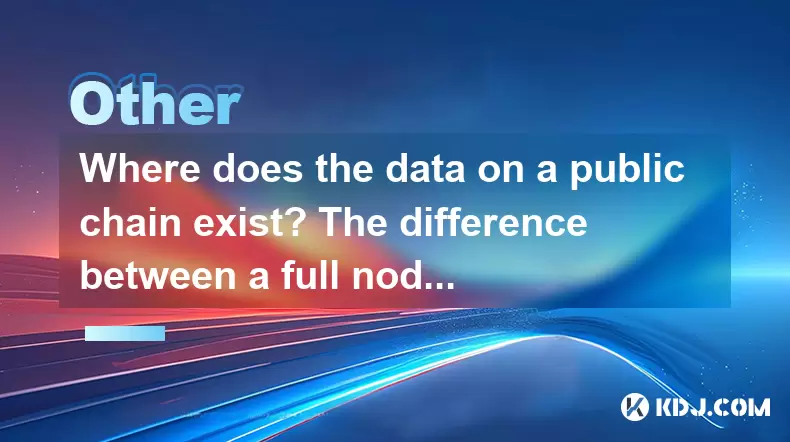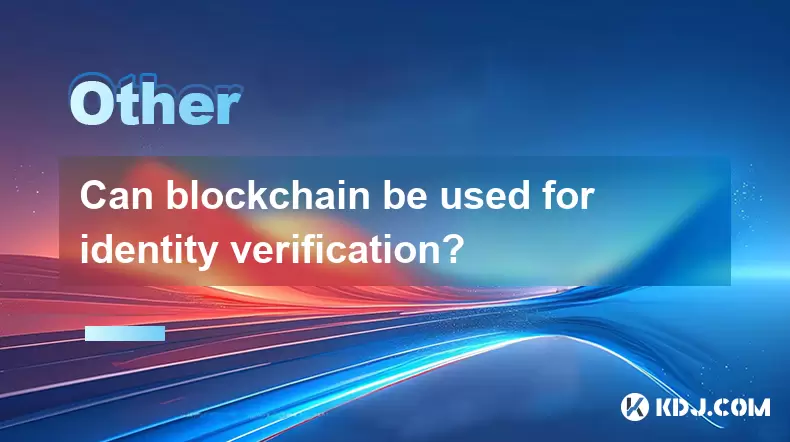-
 Bitcoin
Bitcoin $114700
-3.36% -
 Ethereum
Ethereum $3619
-6.51% -
 XRP
XRP $2.926
-7.66% -
 Tether USDt
Tether USDt $0.9998
-0.02% -
 BNB
BNB $768.6
-4.90% -
 Solana
Solana $168.2
-7.52% -
 USDC
USDC $0.9999
0.00% -
 Dogecoin
Dogecoin $0.2045
-9.02% -
 TRON
TRON $0.3243
-0.27% -
 Cardano
Cardano $0.7208
-8.45% -
 Hyperliquid
Hyperliquid $39.74
-9.17% -
 Stellar
Stellar $0.3882
-8.79% -
 Sui
Sui $3.481
-11.93% -
 Chainlink
Chainlink $16.52
-9.04% -
 Bitcoin Cash
Bitcoin Cash $556.7
-4.79% -
 Hedera
Hedera $0.2444
-11.40% -
 Avalanche
Avalanche $21.96
-8.51% -
 Ethena USDe
Ethena USDe $1.001
-0.02% -
 UNUS SED LEO
UNUS SED LEO $8.950
0.15% -
 Toncoin
Toncoin $3.425
-2.33% -
 Litecoin
Litecoin $104.4
-5.94% -
 Shiba Inu
Shiba Inu $0.00001212
-7.49% -
 Polkadot
Polkadot $3.630
-6.98% -
 Uniswap
Uniswap $9.165
-10.12% -
 Monero
Monero $306.8
-3.10% -
 Dai
Dai $0.9999
-0.01% -
 Bitget Token
Bitget Token $4.360
-3.43% -
 Pepe
Pepe $0.00001049
-9.59% -
 Cronos
Cronos $0.1352
-8.67% -
 Aave
Aave $256.5
-8.03%
Where does the data on a public chain exist? The difference between a full node and a light node
Data on a public chain is decentralized across nodes, with full nodes storing the entire blockchain and light nodes using block headers for efficient transaction verification.
May 16, 2025 at 06:14 am

The data on a public chain exists in a decentralized manner, spread across numerous nodes that participate in the network. Each node maintains a copy of the blockchain, which is a continuously growing list of records, called blocks, linked and secured using cryptography. This decentralized nature ensures that the data remains transparent, secure, and accessible to anyone who wishes to participate in the network.
What is a Public Chain?
A public chain is a type of blockchain network that is open to the public and allows anyone to join and participate. It operates on a consensus mechanism, such as Proof of Work (PoW) or Proof of Stake (PoS), to validate transactions and add new blocks to the chain. The most well-known example of a public chain is Bitcoin, which pioneered the concept of a decentralized, trustless system for digital currency.
Where Does the Data on a Public Chain Exist?
The data on a public chain exists on nodes, which are computers connected to the blockchain network. Each node maintains a complete or partial copy of the blockchain, depending on its type. The data includes transaction records, block headers, and other necessary information to maintain the integrity and continuity of the blockchain.
- Full Nodes: These nodes store and maintain a complete copy of the blockchain. They validate transactions and blocks, ensuring that the data adheres to the network's rules and consensus mechanisms.
- Light Nodes: Also known as SPV (Simplified Payment Verification) nodes, these nodes store only a subset of the blockchain data. They rely on full nodes for the majority of their data and are used primarily for quick transaction verification without the need to download the entire blockchain.
The Role of Nodes in a Public Chain
Nodes play a crucial role in the operation and security of a public chain. They are responsible for storing, validating, and propagating data across the network. Here’s a detailed look at the roles of different types of nodes:
Full Nodes: Full nodes are the backbone of a public chain. They store the entire history of the blockchain, from the genesis block to the most recent block. They validate transactions by checking them against the network's rules and consensus mechanisms. If a transaction or block is found to be invalid, full nodes will reject it, ensuring the integrity of the blockchain.
- Validation: Full nodes validate transactions by ensuring that the sender has the necessary funds, the transaction is correctly formatted, and it adheres to the network's rules.
- Propagation: Once a transaction or block is validated, full nodes propagate it to other nodes in the network, ensuring that the data is distributed and synchronized across the entire network.
- Security: By maintaining a complete copy of the blockchain, full nodes contribute to the security of the network. They can detect and reject any attempts to alter the blockchain's history, preventing double-spending and other malicious activities.
Light Nodes: Light nodes, on the other hand, are designed for users who need to interact with the blockchain but do not require the full data set. They are particularly useful for mobile devices and other resource-constrained environments.
- Transaction Verification: Light nodes use the headers of blocks to verify transactions without downloading the entire blockchain. They rely on full nodes to provide the necessary data for transaction validation.
- Efficiency: By storing only a subset of the blockchain data, light nodes are more efficient in terms of storage and bandwidth. This makes them ideal for applications that require quick transaction processing without the overhead of maintaining a full node.
- Dependency on Full Nodes: Light nodes depend on full nodes for their operation. They need to connect to full nodes to retrieve the necessary data for transaction verification and to stay updated with the latest state of the blockchain.
The Difference Between a Full Node and a Light Node
The primary difference between a full node and a light node lies in the amount of data they store and their roles within the network. Here’s a detailed comparison:
Data Storage:
- Full Node: Stores the entire blockchain, including all transactions, blocks, and other relevant data. This requires significant storage space, often in the range of hundreds of gigabytes or more, depending on the blockchain.
- Light Node: Stores only a subset of the blockchain data, typically the block headers. This requires much less storage space, making it suitable for devices with limited resources.
Validation and Security:
- Full Node: Validates transactions and blocks independently, ensuring the integrity of the blockchain. Full nodes contribute to the security of the network by rejecting invalid data and maintaining a complete and accurate copy of the blockchain.
- Light Node: Relies on full nodes for transaction validation. While light nodes can verify transactions using block headers, they do not contribute to the overall security of the network in the same way full nodes do.
Resource Requirements:
- Full Node: Requires significant computational power, storage, and bandwidth to maintain and validate the entire blockchain. Running a full node is resource-intensive and typically requires a dedicated machine.
- Light Node: Requires minimal resources, making it suitable for devices with limited computational power and storage, such as smartphones and tablets.
Use Cases:
- Full Node: Ideal for users who need to validate transactions independently, contribute to the security of the network, and have access to the entire history of the blockchain. Full nodes are essential for miners, developers, and users who require a high level of trust and security.
- Light Node: Suitable for users who need to interact with the blockchain but do not require the full data set. Light nodes are commonly used in mobile wallets and other applications that prioritize efficiency and quick transaction processing.
Setting Up a Full Node
Setting up a full node involves several steps and requires a good understanding of the blockchain technology and the specific network you are joining. Here’s a detailed guide on how to set up a full node for the Bitcoin network:
Choose a Bitcoin Implementation: There are several implementations of the Bitcoin protocol, with Bitcoin Core being the most widely used. Download the latest version of Bitcoin Core from the official website.
Prepare Your Hardware: Ensure that your computer meets the minimum requirements for running a full node. You will need at least 500 GB of free disk space, 2 GB of RAM, and a reliable internet connection.
Install Bitcoin Core:
- Windows: Download the installer and follow the on-screen instructions to install Bitcoin Core.
- Mac: Download the DMG file and drag the Bitcoin-Qt application to your Applications folder.
- Linux: Use the command line to download and install Bitcoin Core. For example, on Ubuntu, you can use the following commands:
sudo apt-add-repository ppa:bitcoin/bitcoin
sudo apt-get update
sudo apt-get install bitcoin-qt
Configure Bitcoin Core: Launch Bitcoin Core and allow it to synchronize with the Bitcoin network. This process can take several days, depending on your internet speed and the size of the blockchain.
Verify the Blockchain: Once the synchronization is complete, Bitcoin Core will have downloaded and verified the entire blockchain. You can now use your full node to validate transactions and contribute to the security of the Bitcoin network.
Setting Up a Light Node
Setting up a light node is much simpler and requires fewer resources. Here’s a guide on how to set up a light node using the Electrum wallet for Bitcoin:
Download Electrum: Visit the official Electrum website and download the latest version of the wallet for your operating system.
Install Electrum:
- Windows: Run the installer and follow the on-screen instructions.
- Mac: Open the DMG file and drag the Electrum application to your Applications folder.
- Linux: Use the command line to download and install Electrum. For example, on Ubuntu, you can use the following commands:
sudo apt-add-repository ppa:electrum/electrum
sudo apt-get update
sudo apt-get install electrum
Configure Electrum: Launch Electrum and create a new wallet or restore an existing one. Electrum will connect to the Bitcoin network and start downloading the necessary data to operate as a light node.
Use Electrum: Once the setup is complete, you can use Electrum to send and receive Bitcoin transactions. Electrum will use the block headers to verify transactions without downloading the entire blockchain.
Frequently Asked Questions
Q: Can a light node become a full node?
A: Yes, a light node can be upgraded to a full node by downloading and verifying the entire blockchain. However, this process requires significant resources and time, so it is typically done on a dedicated machine.
Q: How do nodes communicate with each other in a public chain?
A: Nodes in a public chain communicate with each other using a peer-to-peer (P2P) network protocol. They exchange data such as transactions, blocks, and network status information to ensure that the blockchain remains synchronized across the network.
Q: What happens if a full node goes offline?
A: If a full node goes offline, it will no longer contribute to the validation and propagation of transactions and blocks. However, the network remains operational as long as there are enough other full nodes online. When the offline node comes back online, it will need to synchronize with the network to catch up on any missed data.
Q: Are there any risks associated with running a light node?
A: Running a light node involves some risks, primarily related to security. Since light nodes rely on full nodes for data, they are more vulnerable to attacks that could compromise the integrity of the data they receive. However, reputable light node implementations, such as Electrum, have built-in security measures to mitigate these risks.
Disclaimer:info@kdj.com
The information provided is not trading advice. kdj.com does not assume any responsibility for any investments made based on the information provided in this article. Cryptocurrencies are highly volatile and it is highly recommended that you invest with caution after thorough research!
If you believe that the content used on this website infringes your copyright, please contact us immediately (info@kdj.com) and we will delete it promptly.
- Bitcoin, Ethereum, and Investor Behavior: A New York Minute on Crypto Trends
- 2025-08-01 15:10:12
- Tether's Q2 Triumph: USDT Supply Soars Amidst Profit Surge!
- 2025-08-01 15:10:12
- Ethereum ETF Holdings: A Corporate Treasury Revolution?
- 2025-08-01 15:30:12
- Ethereum's Wild Ride: Funding Rates, Price Drops, and Retail to the Rescue!
- 2025-08-01 15:30:12
- Ethereum Under Pressure: Crypto Market Drop Explained
- 2025-08-01 15:35:11
- Ethereum ETF Mania: Inflows Surge, Market Rises, What's Next?
- 2025-08-01 15:35:11
Related knowledge

How to start a business using blockchain?
Jul 28,2025 at 12:36am
Understanding the Basics of Blockchain TechnologyBefore diving into the process of starting a business using blockchain, it's crucial to understand wh...

What is a token on the blockchain?
Jul 21,2025 at 07:00am
Understanding the Concept of a TokenIn the realm of blockchain technology, a token is a digital representation of an asset or utility that exists on a...

Can blockchain be used for identity verification?
Jul 18,2025 at 02:14pm
Understanding Identity Verification in the Digital AgeIn the modern digital landscape, identity verification has become a critical component for ensur...

What is a consensus mechanism in blockchain?
Jul 21,2025 at 03:01am
Understanding the Basics of Consensus MechanismsA consensus mechanism is a critical component of any blockchain network. It refers to the process by w...

How to explain blockchain to someone with no tech background?
Jul 18,2025 at 11:08pm
Understanding the Basics of BlockchainTo explain blockchain to someone with no tech background, it's essential to start with simple analogies and avoi...

Who invented blockchain technology?
Jul 23,2025 at 01:28am
Origins of Blockchain TechnologyBlockchain technology did not emerge from a single inventor or institution. Instead, it evolved through a series of ac...

How to start a business using blockchain?
Jul 28,2025 at 12:36am
Understanding the Basics of Blockchain TechnologyBefore diving into the process of starting a business using blockchain, it's crucial to understand wh...

What is a token on the blockchain?
Jul 21,2025 at 07:00am
Understanding the Concept of a TokenIn the realm of blockchain technology, a token is a digital representation of an asset or utility that exists on a...

Can blockchain be used for identity verification?
Jul 18,2025 at 02:14pm
Understanding Identity Verification in the Digital AgeIn the modern digital landscape, identity verification has become a critical component for ensur...

What is a consensus mechanism in blockchain?
Jul 21,2025 at 03:01am
Understanding the Basics of Consensus MechanismsA consensus mechanism is a critical component of any blockchain network. It refers to the process by w...

How to explain blockchain to someone with no tech background?
Jul 18,2025 at 11:08pm
Understanding the Basics of BlockchainTo explain blockchain to someone with no tech background, it's essential to start with simple analogies and avoi...

Who invented blockchain technology?
Jul 23,2025 at 01:28am
Origins of Blockchain TechnologyBlockchain technology did not emerge from a single inventor or institution. Instead, it evolved through a series of ac...
See all articles

























































































